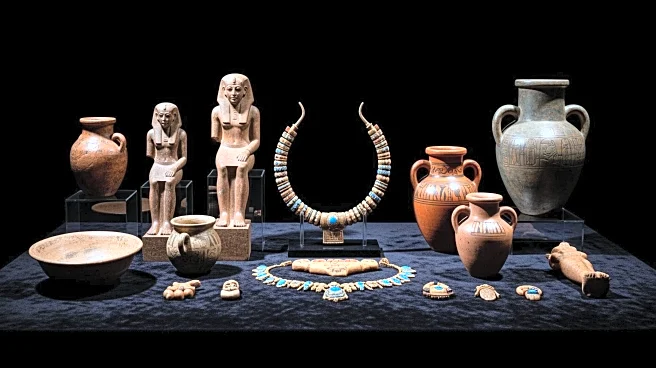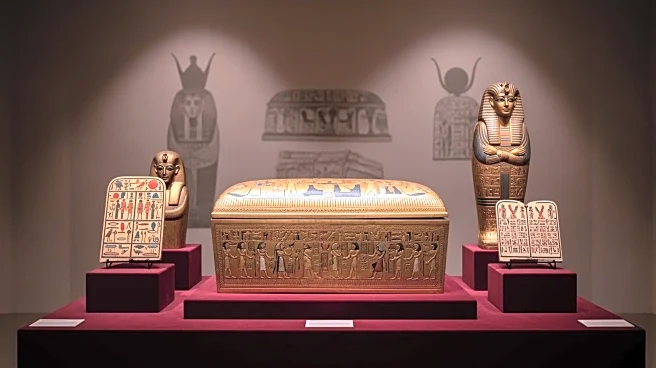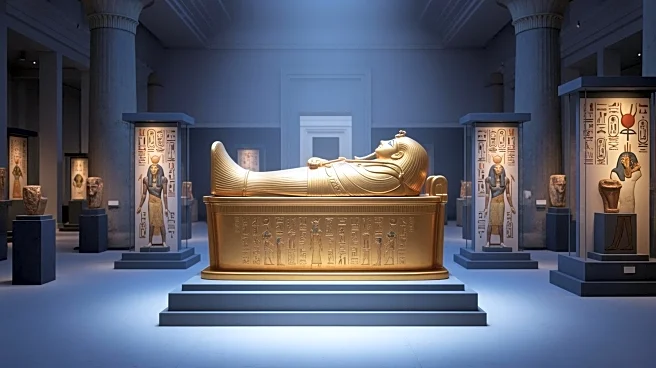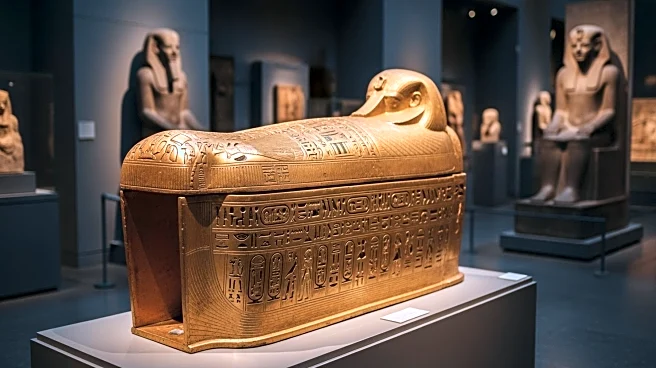What's Happening?
Egypt has successfully recovered 36 stolen artifacts from the United States, including rare manuscripts and ancient religious relics. The recovery was facilitated by the Manhattan District Attorney's Antiquities
Trafficking Unit, the Metropolitan Museum of Art, and the New York State Attorney General. These artifacts, which span millennia, were illegally taken out of Egypt decades ago. The Manhattan District Attorney's office discovered 11 of these artifacts during various criminal investigations, including those related to the disgraced antiquities dealer Robin Symes. The Metropolitan Museum of Art returned 24 rare manuscripts, while the New York State Attorney General recovered a 3,000-year-old painted plaster panel from the 18th Dynasty. These operations were conducted under a Memorandum of Understanding between Egypt and the United States regarding illegal antiquities, which was expanded in 2021 and remains valid through 2026.
Why It's Important?
The return of these artifacts is a significant achievement for Egypt, highlighting the importance of international cooperation in combating illegal antiquities trafficking. These artifacts are not only historical treasures but also represent the cultural heritage and civilization of Egypt. Their recovery and return to Egypt underscore the effectiveness of legal and scientific efforts in preserving cultural heritage. This event also serves as a reminder of the ongoing challenges in protecting cultural artifacts from illegal trade and the need for continued vigilance and collaboration among nations to address these issues.
What's Next?
The recovered artifacts will be restored and displayed at Cairo's Egyptian Museum in Tahrir Square. This restoration process represents a new step in Egypt's efforts to reclaim its cultural heritage. The Egyptian Ministry of Tourism and Antiquities has emphasized the importance of these artifacts as living evidence of Egypt's civilization. The successful recovery may encourage further international cooperation and efforts to return other stolen artifacts to their countries of origin. Additionally, it may lead to increased scrutiny and regulation of antiquities trade to prevent future illegal activities.
Beyond the Headlines
The return of these artifacts raises ethical and legal questions about the responsibilities of museums and collectors in ensuring the provenance of their collections. It also highlights the cultural significance of artifacts and the impact of their loss on the countries of origin. The event may prompt discussions on the need for more stringent international laws and agreements to protect cultural heritage and prevent illegal trafficking.












